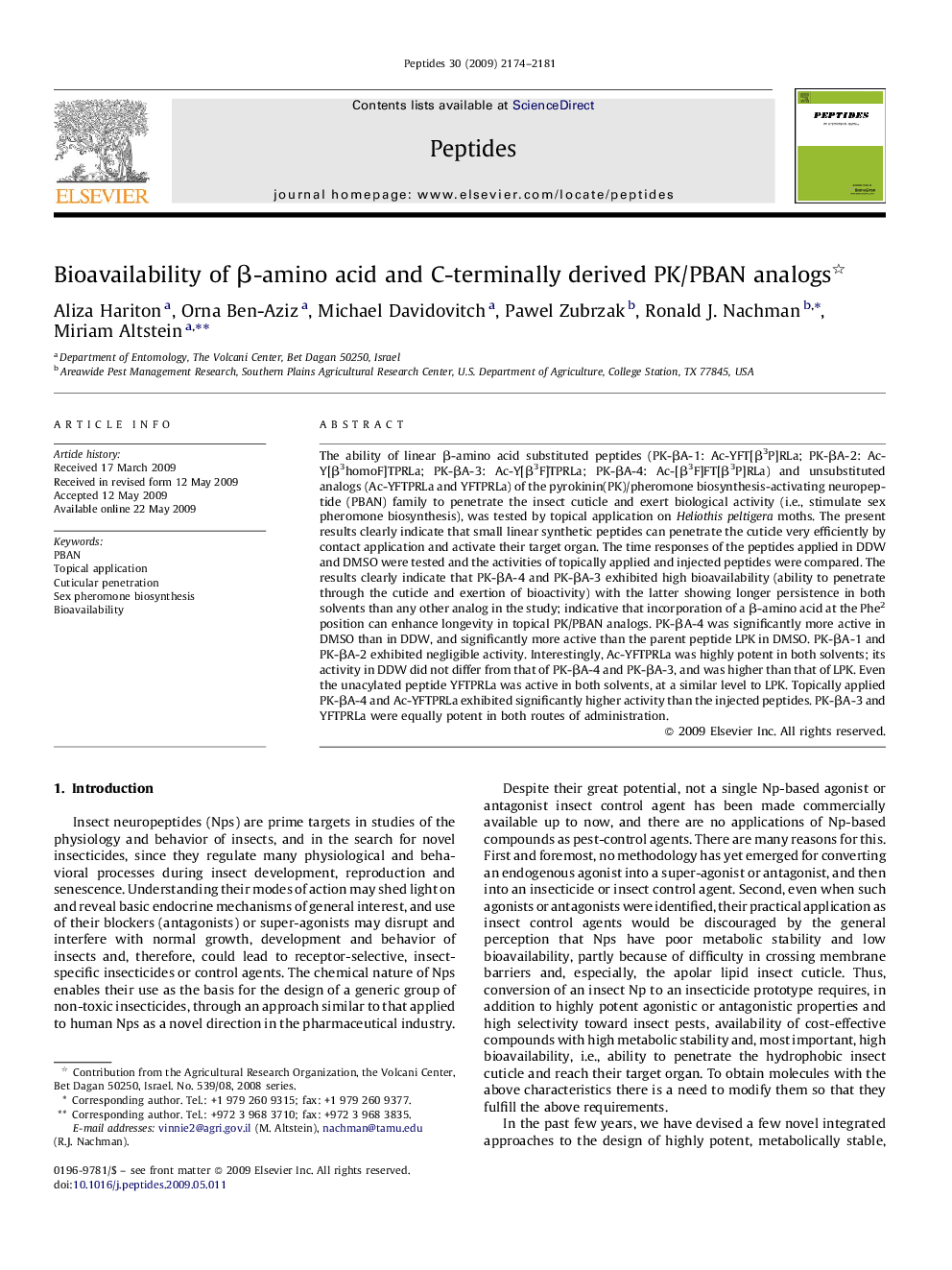| Article ID | Journal | Published Year | Pages | File Type |
|---|---|---|---|---|
| 2007039 | Peptides | 2009 | 8 Pages |
Abstract
The ability of linear β-amino acid substituted peptides (PK-βA-1: Ac-YFT[β3P]RLa; PK-βA-2: Ac-Y[β3homoF]TPRLa; PK-βA-3: Ac-Y[β3F]TPRLa; PK-βA-4: Ac-[β3F]FT[β3P]RLa) and unsubstituted analogs (Ac-YFTPRLa and YFTPRLa) of the pyrokinin(PK)/pheromone biosynthesis-activating neuropeptide (PBAN) family to penetrate the insect cuticle and exert biological activity (i.e., stimulate sex pheromone biosynthesis), was tested by topical application on Heliothis peltigera moths. The present results clearly indicate that small linear synthetic peptides can penetrate the cuticle very efficiently by contact application and activate their target organ. The time responses of the peptides applied in DDW and DMSO were tested and the activities of topically applied and injected peptides were compared. The results clearly indicate that PK-βA-4 and PK-βA-3 exhibited high bioavailability (ability to penetrate through the cuticle and exertion of bioactivity) with the latter showing longer persistence in both solvents than any other analog in the study; indicative that incorporation of a β-amino acid at the Phe2 position can enhance longevity in topical PK/PBAN analogs. PK-βA-4 was significantly more active in DMSO than in DDW, and significantly more active than the parent peptide LPK in DMSO. PK-βA-1 and PK-βA-2 exhibited negligible activity. Interestingly, Ac-YFTPRLa was highly potent in both solvents; its activity in DDW did not differ from that of PK-βA-4 and PK-βA-3, and was higher than that of LPK. Even the unacylated peptide YFTPRLa was active in both solvents, at a similar level to LPK. Topically applied PK-βA-4 and Ac-YFTPRLa exhibited significantly higher activity than the injected peptides. PK-βA-3 and YFTPRLa were equally potent in both routes of administration.
Related Topics
Life Sciences
Biochemistry, Genetics and Molecular Biology
Biochemistry
Authors
Aliza Hariton, Orna Ben-Aziz, Michael Davidovitch, Pawel Zubrzak, Ronald J. Nachman, Miriam Altstein,
